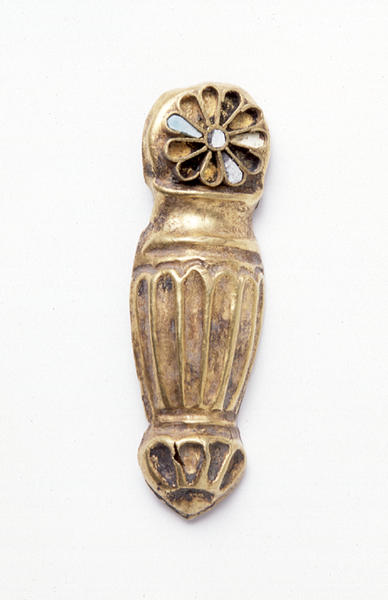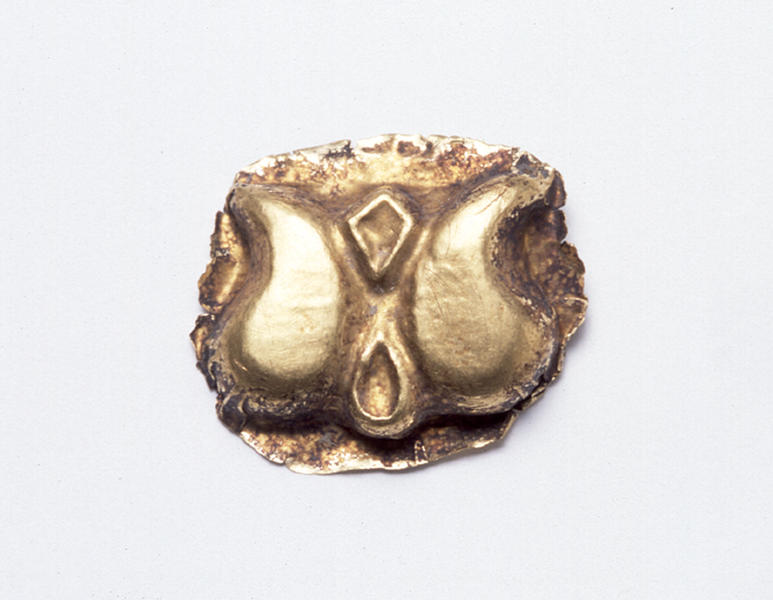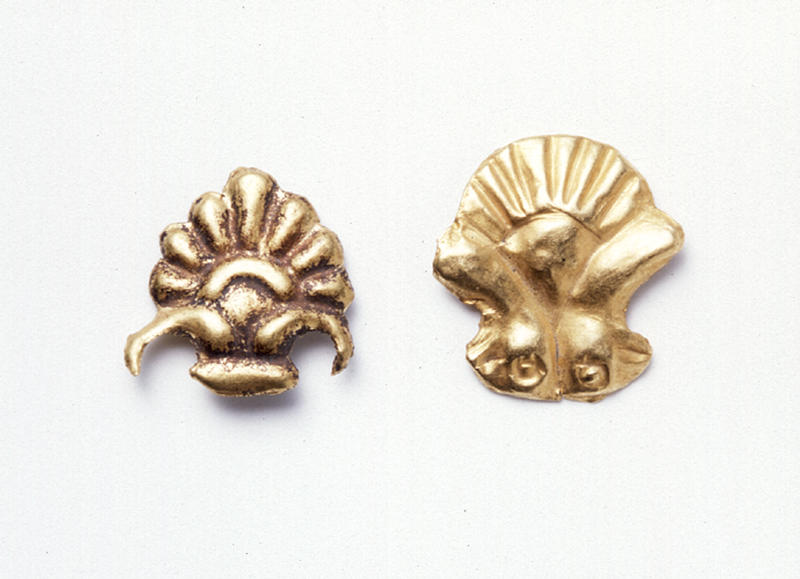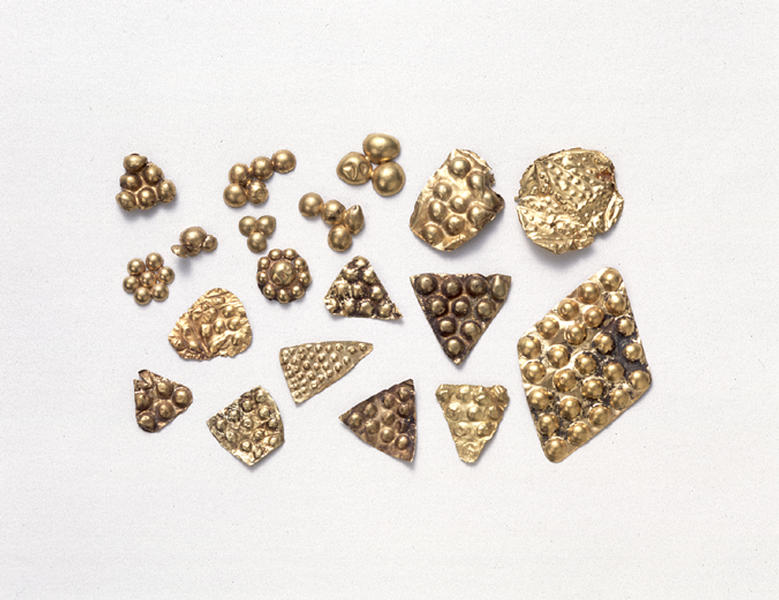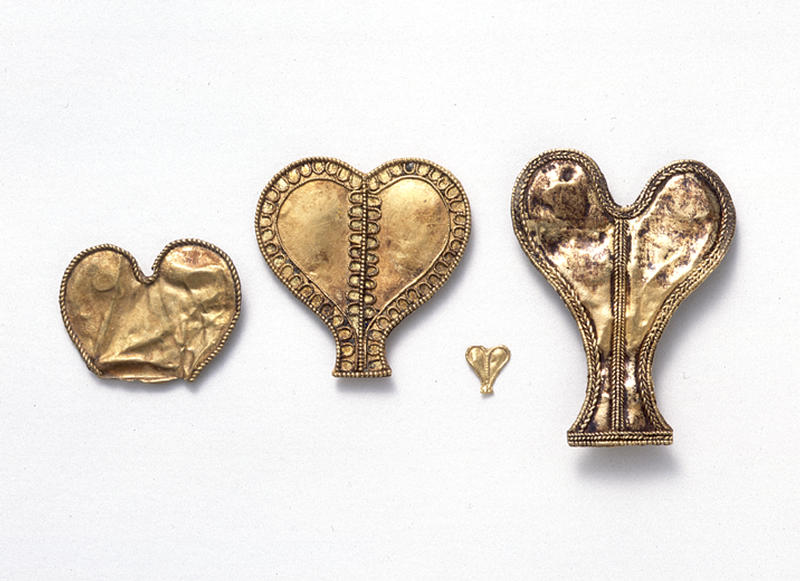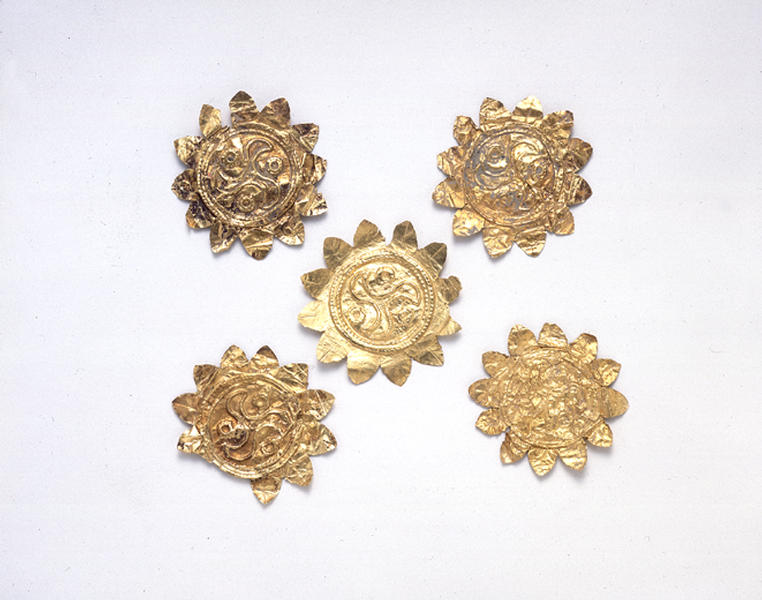装飾板
- 紀元前5-紀元前2世紀
- 金
解説(古代バクトリア遺宝展)
前5―前2世紀
金
a:高4.3 cm 幅1.4 cm b:高1.8 cm 幅2.0 cm
c:高1.4-1.7 cm 幅1.4-1.5 cm d:高0.6-3.7 cm 幅0.9-2.5 cm
e:高0.8-4.9 cm 幅0.8-3.7 cm f:高4.5 cm
aは器の上にロゼット文をあしらった意匠を押し出しの金板の貼り合せでブローチを形成している。ロゼット文には練ガラスの象嵌がほどこされている。
Bとcは植物文を押し出しで表している。Cは特にパルメット文の意匠を形成している。
Dは押し出しの小球で三角形、円形、菱形を作っている。古代オリエント世界では、この意匠には豊穣の意味合いが込められていたと考えられる。
Eは金板と金線で中央の中心軸やその輪郭を装飾したハート形のブローチあるいはアプリケを形成している。オクサス遺宝にも類例が見られる(No. 160)。
Fは金箔を、12枚の花弁を周囲に巡らせたロゼット文に切り、内側のメダイオンにはアキレス・ヒール意匠に由来する末端の曲がったプロペラの文様を押し出しで形成している。
Catalogue Entry
5th‐2nd century B.C.
Gold
(a)H. 4.3 cm, W. 1.4 cm (b)H. 1.8 cm, W. 2.0 cm
cH. 1.4-1.7 cm, W. 1.4-1.5 cm(d)H. 0.6-3.7 cm, W. 0.9-2.5 cm
(e)H. 0.8-4.9 cm, W. 0.8-3.7 cm(f)H. 4.5 cm
(a) This brooch of a pressed and joined gold sheet is decorated with a beaten design of a vessel topped by a rosette. Originally the rosette was inlaid with glass.
(b), c These works are decorated with pressed botanical designs. Brooch c is worked into a palmetto shape.
(d) Small pressed balls are formed into triangular, circular, or diamond-shaped groupings. It is thought that this design included meanings of fertility or fecundity in ancient Egypt.
(e) Heart-shaped brooches or applique are formed from gold sheets which are then outlined, and center-lined with gold wire. A similar example can also be found in the Oxus treasure (no. 160).
(f) Gold foil has been cut into rosette shapes, each surrounded by twelve petals. The central medallion on each work is pressed with a propeller design which comes from the last verse of the famous tale of Achilles's heel.
